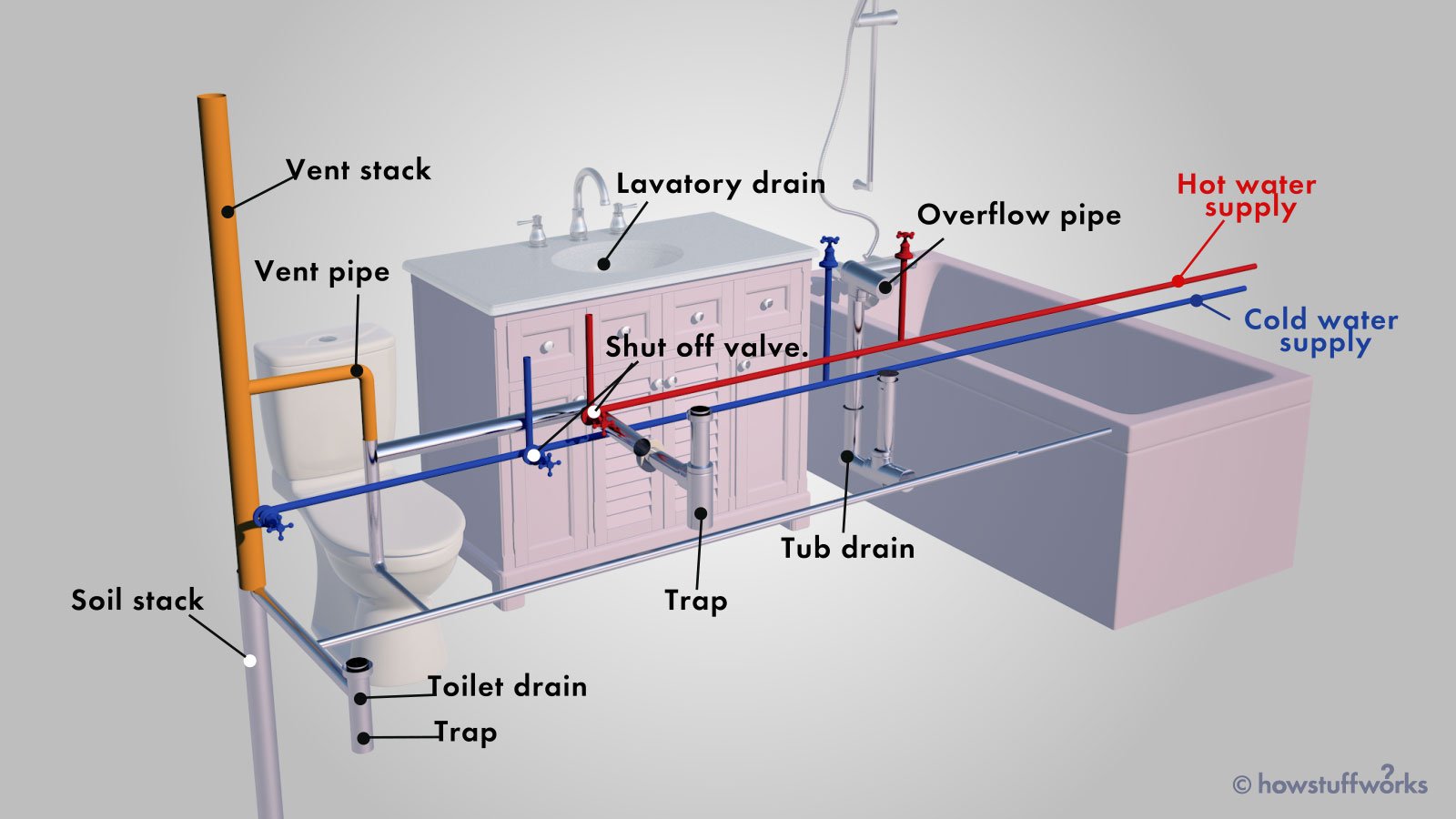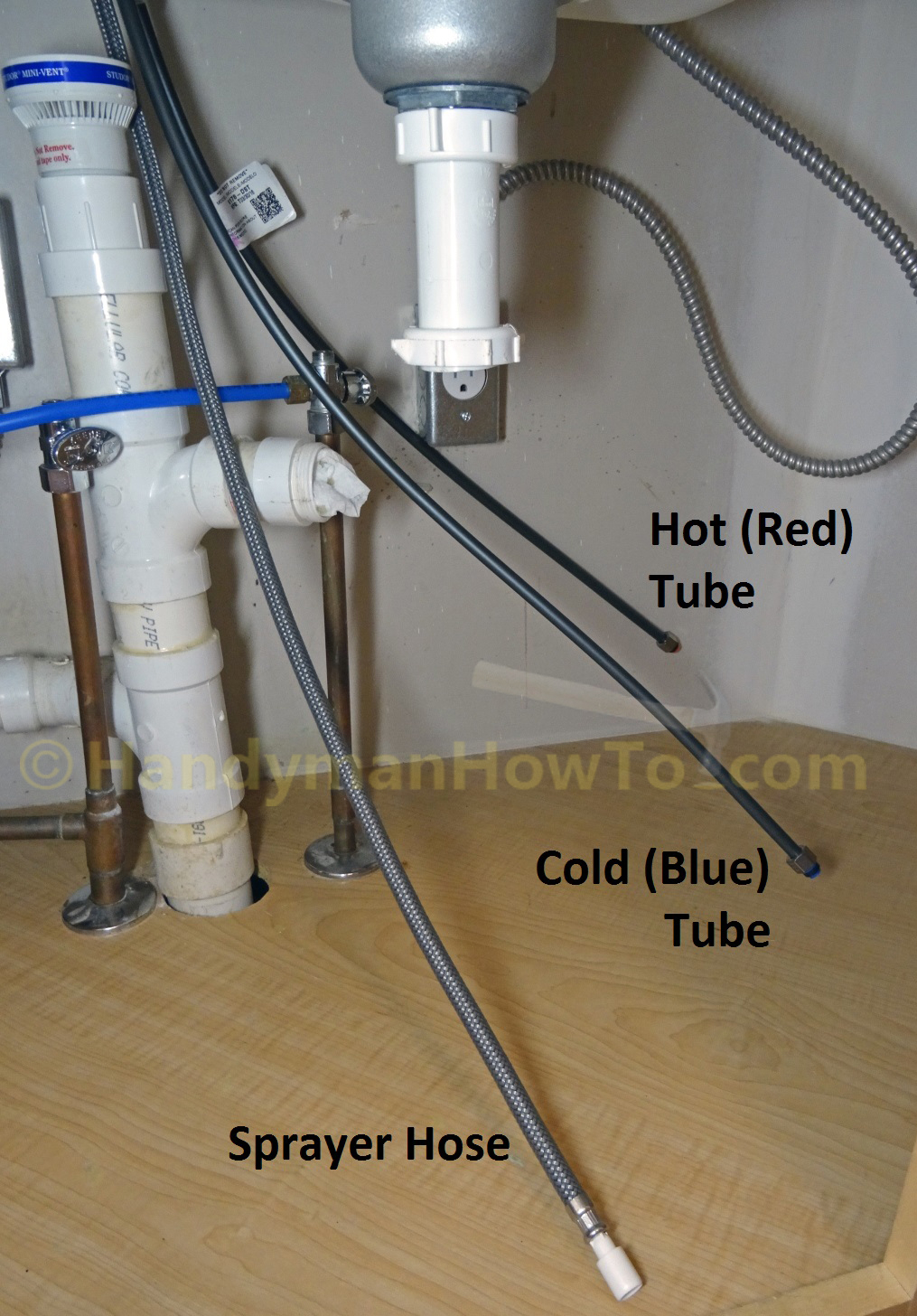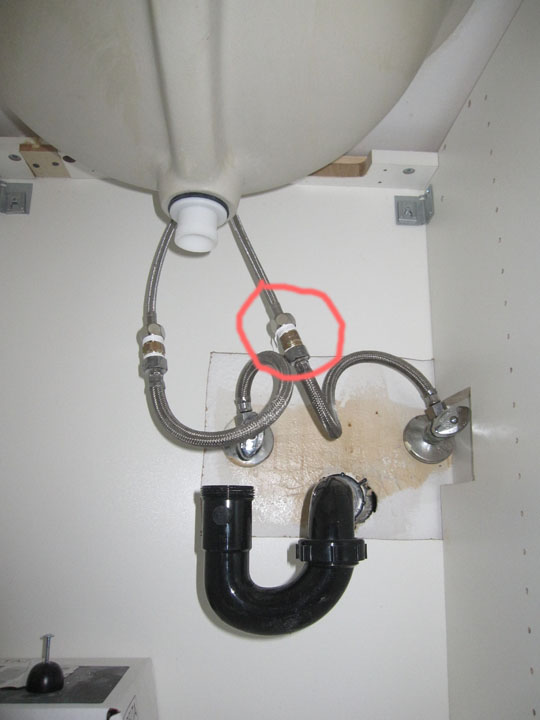Installing a new kitchen sink water supply line may seem like a daunting task, but with the right tools and knowledge, it can be a straightforward process. Before you begin, make sure to shut off the water supply and drain the existing line. Then, follow these steps to install your new kitchen sink water supply line: 1. Measure and cut the supply line to fit between the shut-off valve and the sink's water inlet. 2. Attach one end of the line to the shut-off valve using a compression fitting. 3. Connect the other end of the line to the sink's water inlet, again using a compression fitting. 4. Turn the water supply back on and check for any leaks. If there are any, tighten the fittings as needed. 5. Finally, secure the supply line to the wall or cabinet using clips or straps.How to Install a Kitchen Sink Water Supply Line
If your existing kitchen sink water supply line is damaged or leaking, it's important to replace it as soon as possible to avoid any further damage. Follow these steps to replace your kitchen sink water supply line: 1. Shut off the water supply and drain the existing line. 2. Disconnect the old supply line from both the shut-off valve and the sink's water inlet. 3. Measure and cut the new supply line to fit between the two connections. 4. Attach the new line using compression fittings, making sure to tighten them securely. 5. Turn the water supply back on and check for any leaks. If there are any, tighten the fittings as needed.How to Replace a Kitchen Sink Water Supply Line
Despite their importance, kitchen sink water supply lines can experience a variety of problems. Some common issues include: 1. Leaks: Over time, the fittings on a supply line can loosen and cause leaks. This can be fixed by tightening the fittings or replacing them if they are damaged. 2. Low water pressure: If the water pressure in your kitchen sink is low, it could be due to a clogged supply line. Try cleaning it out or replacing it if necessary. 3. Corrosion: If your supply line is made of metal, it may be prone to corrosion. This can cause leaks and affect water quality. Consider replacing it with a more durable material. 4. Freezing: In colder climates, kitchen sink water supply lines can freeze and burst during the winter. Be sure to properly insulate your lines to prevent this from happening.Common Kitchen Sink Water Supply Line Problems
When it comes to choosing the right kitchen sink water supply line, there are a few factors to consider: 1. Material: Supply lines can be made of various materials, such as copper, PVC, or braided stainless steel. Each has its own pros and cons, so consider your needs and budget before making a decision. 2. Length: Make sure to measure the distance between your shut-off valve and sink's water inlet to ensure you purchase a supply line of the appropriate length. 3. Fittings: Different supply lines may have different types of fittings, such as compression or quick connect. Ensure that the fittings will work with your existing plumbing.Choosing the Right Kitchen Sink Water Supply Line
If you notice a leak in your kitchen sink water supply line, it's important to address it immediately. Here's how to fix a leaking supply line: 1. Turn off the water supply and drain the line. 2. Tighten the fittings on the line to see if that stops the leak. If not, the fittings may need to be replaced. 3. If the fittings are not the issue, the line itself may be damaged and need to be replaced. Follow the steps outlined in the "How to Replace a Kitchen Sink Water Supply Line" section.How to Fix a Leaking Kitchen Sink Water Supply Line
As mentioned before, kitchen sink water supply lines can be made of various materials. Here are some common options and their characteristics: 1. Copper: Copper supply lines are durable and resistant to corrosion. However, they can be more expensive and may require specialized tools to install. 2. PVC: PVC supply lines are affordable and easy to install. However, they are not as durable as other materials and may not be suitable for hot water supply. 3. Braided Stainless Steel: This is a popular choice due to its durability and flexibility. It is also resistant to corrosion and can handle both hot and cold water. However, it may be more expensive than other options.Understanding Kitchen Sink Water Supply Line Materials
To ensure your kitchen sink water supply line stays in good condition, follow these tips: 1. Regularly check for leaks and tighten fittings as needed. 2. Clean the line periodically to prevent clogs and buildup. 3. Inspect the line for any signs of damage, such as corrosion or cracks, and replace if necessary. 4. Ensure the line is properly insulated to prevent freezing in colder climates.Tips for Maintaining Your Kitchen Sink Water Supply Line
If you're installing a new kitchen sink water supply line, follow these steps for a successful installation: 1. Shut off the water supply and drain the existing line. 2. Measure and cut the new supply line to fit between the shut-off valve and the sink's water inlet. 3. Attach the line using compression fittings. 4. Turn the water supply back on and check for leaks. 5. Secure the line to the wall or cabinet using clips or straps.Installing a New Kitchen Sink Water Supply Line: Step-by-Step Guide
If you're experiencing low water pressure in your kitchen sink, there are a few potential causes: 1. Clogged aerator: The aerator, which is the small mesh piece at the end of your faucet, can become clogged with mineral deposits. Try cleaning it out to see if that improves the water pressure. 2. Clogged supply line: As mentioned before, a clogged supply line can also cause low water pressure. Try cleaning it out or replacing it if necessary. 3. Faulty shut-off valve: If the shut-off valve is not fully open, it can restrict water flow. Check to make sure it is fully open. 4. Broken supply line: If the supply line is damaged or leaking, it can affect water pressure. Follow the steps outlined in the "How to Replace a Kitchen Sink Water Supply Line" section to fix it.Troubleshooting Low Water Pressure in Your Kitchen Sink
As mentioned before, kitchen sink water supply lines can freeze and burst during the winter, leading to costly repairs. To prevent this from happening, follow these steps to winterize your supply line: 1. Shut off the water supply and drain the line. 2. Add insulation to the line, such as foam sleeves or heat tape. 3. Disconnect any outdoor hoses or fixtures connected to the line. 4. Keep cabinet doors open to allow warm air to circulate around the pipes. 5. If you're leaving your home for an extended period of time, shut off the main water supply and drain the pipes completely. In conclusion, proper installation, maintenance, and understanding of your kitchen sink water supply line is crucial for a functioning and leak-free plumbing system. By following these tips and troubleshooting guide, you can ensure your kitchen sink water supply line is in top shape. Remember to always consult a professional plumber if you encounter any major issues or are unsure of how to proceed.How to Winterize Your Kitchen Sink Water Supply Line
Why Choosing the Right Kitchen Sink Water Supply Line Plumbing is Essential for Your House Design

The Importance of a Properly Installed Kitchen Sink Water Supply Line Plumbing
 When it comes to designing a house, every detail counts. From the flooring to the paint color, homeowners want everything to be perfect. One of the most important aspects of a well-designed house is the kitchen. And when it comes to the kitchen, the sink is an essential component. Not only does it serve as a functional space for washing dishes and preparing food, but it also adds to the overall aesthetic of the kitchen. This is why choosing the right kitchen sink water supply line plumbing is crucial for your house design.
Kitchen sink water supply line plumbing
refers to the pipes and fixtures that supply water to your kitchen sink. This includes the hot and cold water lines as well as the drainage system. While it may seem like a minor detail, the quality and installation of your kitchen sink water supply line plumbing can greatly impact your overall kitchen design.
When it comes to designing a house, every detail counts. From the flooring to the paint color, homeowners want everything to be perfect. One of the most important aspects of a well-designed house is the kitchen. And when it comes to the kitchen, the sink is an essential component. Not only does it serve as a functional space for washing dishes and preparing food, but it also adds to the overall aesthetic of the kitchen. This is why choosing the right kitchen sink water supply line plumbing is crucial for your house design.
Kitchen sink water supply line plumbing
refers to the pipes and fixtures that supply water to your kitchen sink. This includes the hot and cold water lines as well as the drainage system. While it may seem like a minor detail, the quality and installation of your kitchen sink water supply line plumbing can greatly impact your overall kitchen design.
Factors to Consider When Choosing Kitchen Sink Water Supply Line Plumbing
 Material:
The material of your kitchen sink water supply line plumbing is an important factor to consider.
Copper
is a popular choice due to its durability and resistance to corrosion.
PEX
(cross-linked polyethylene) is another option that is cost-effective and flexible, making it easier to install in tight spaces.
Size:
The size of the pipes used in your kitchen sink water supply line plumbing also matters. Larger pipes can provide better water pressure and flow, while smaller pipes may result in reduced water pressure and clogs.
Installation:
Proper installation of your kitchen sink water supply line plumbing is crucial for its functionality and longevity. It is important to hire a professional plumber who has experience with installing this type of plumbing to ensure it is done correctly.
Material:
The material of your kitchen sink water supply line plumbing is an important factor to consider.
Copper
is a popular choice due to its durability and resistance to corrosion.
PEX
(cross-linked polyethylene) is another option that is cost-effective and flexible, making it easier to install in tight spaces.
Size:
The size of the pipes used in your kitchen sink water supply line plumbing also matters. Larger pipes can provide better water pressure and flow, while smaller pipes may result in reduced water pressure and clogs.
Installation:
Proper installation of your kitchen sink water supply line plumbing is crucial for its functionality and longevity. It is important to hire a professional plumber who has experience with installing this type of plumbing to ensure it is done correctly.
The Impact of Kitchen Sink Water Supply Line Plumbing on House Design
 Aside from its functionality,
kitchen sink water supply line plumbing
can greatly impact the overall design of your house. A well-designed plumbing system can add to the aesthetic appeal of your kitchen and increase the value of your home. On the other hand, a poorly installed plumbing system can lead to leaks, water damage, and even mold growth, which can greatly decrease the value of your house.
In addition, choosing the right kitchen sink water supply line plumbing can also save you money in the long run. Quality materials and proper installation can prevent costly repairs and replacements down the line.
In conclusion, when it comes to house design, every detail matters. And this includes the
kitchen sink water supply line plumbing
. By considering important factors such as material, size, and installation, you can ensure that your kitchen sink water supply line plumbing not only functions properly but also enhances the overall design of your house. Remember to hire a professional plumber for installation to ensure the job is done correctly.
Aside from its functionality,
kitchen sink water supply line plumbing
can greatly impact the overall design of your house. A well-designed plumbing system can add to the aesthetic appeal of your kitchen and increase the value of your home. On the other hand, a poorly installed plumbing system can lead to leaks, water damage, and even mold growth, which can greatly decrease the value of your house.
In addition, choosing the right kitchen sink water supply line plumbing can also save you money in the long run. Quality materials and proper installation can prevent costly repairs and replacements down the line.
In conclusion, when it comes to house design, every detail matters. And this includes the
kitchen sink water supply line plumbing
. By considering important factors such as material, size, and installation, you can ensure that your kitchen sink water supply line plumbing not only functions properly but also enhances the overall design of your house. Remember to hire a professional plumber for installation to ensure the job is done correctly.



















:max_bytes(150000):strip_icc()/sink-pipe-under-wash-basin-119001607-197a4387b0f64f3884899445b0f74573.jpg)


































:no_upscale()/cdn.vox-cdn.com/uploads/chorus_asset/file/19495086/drain_0.jpg)






























:max_bytes(150000):strip_icc()/284559-article-a-guide-to-the-standard-crib-mattress-size-5ac50d3ac5542e0037d552d1.png)

